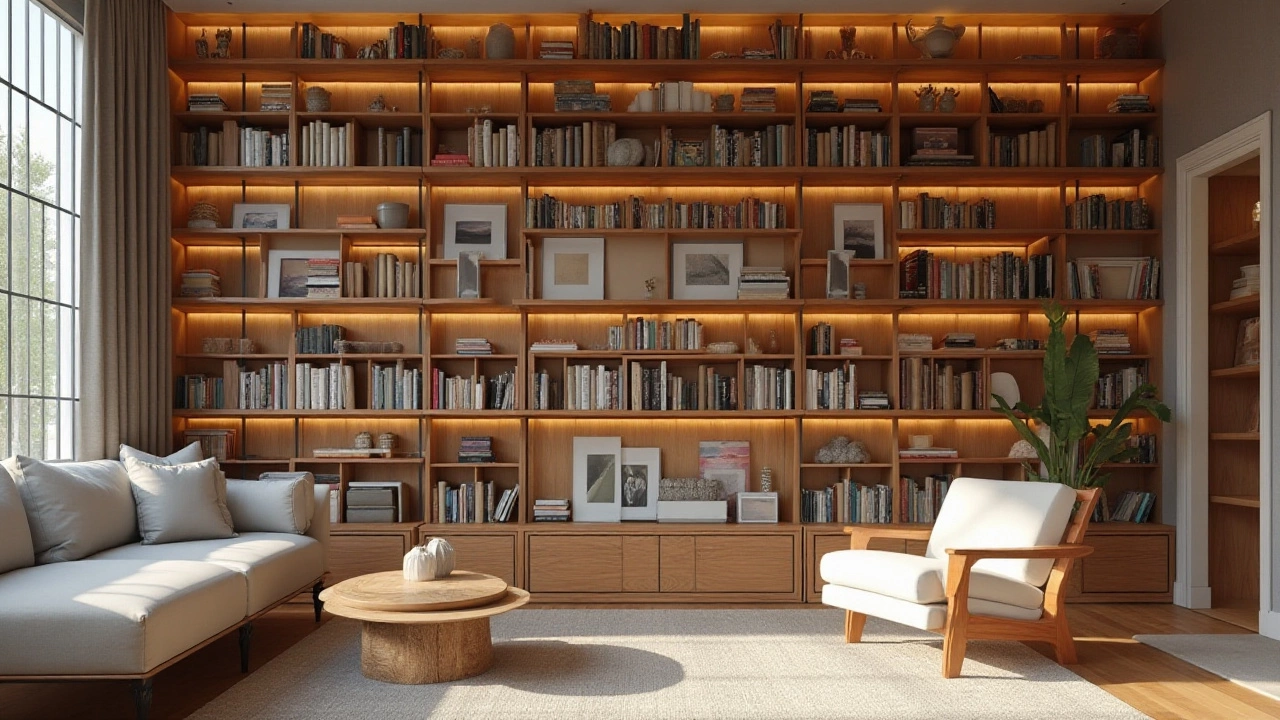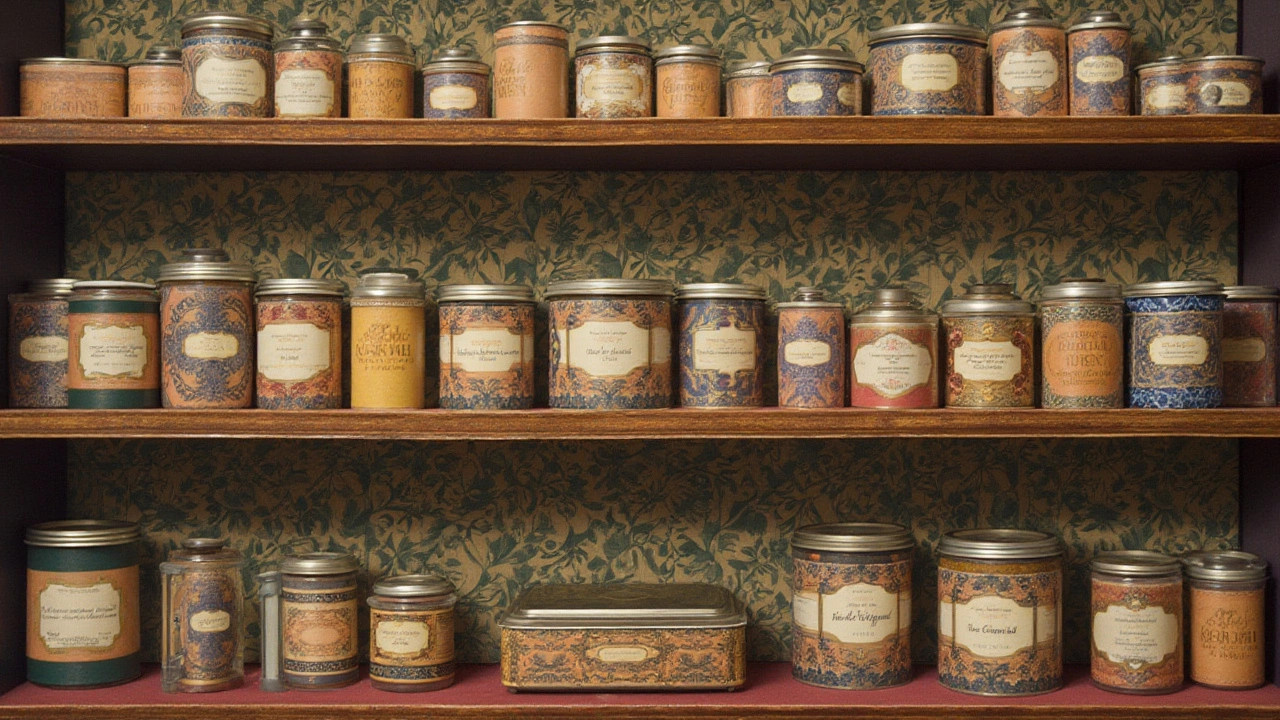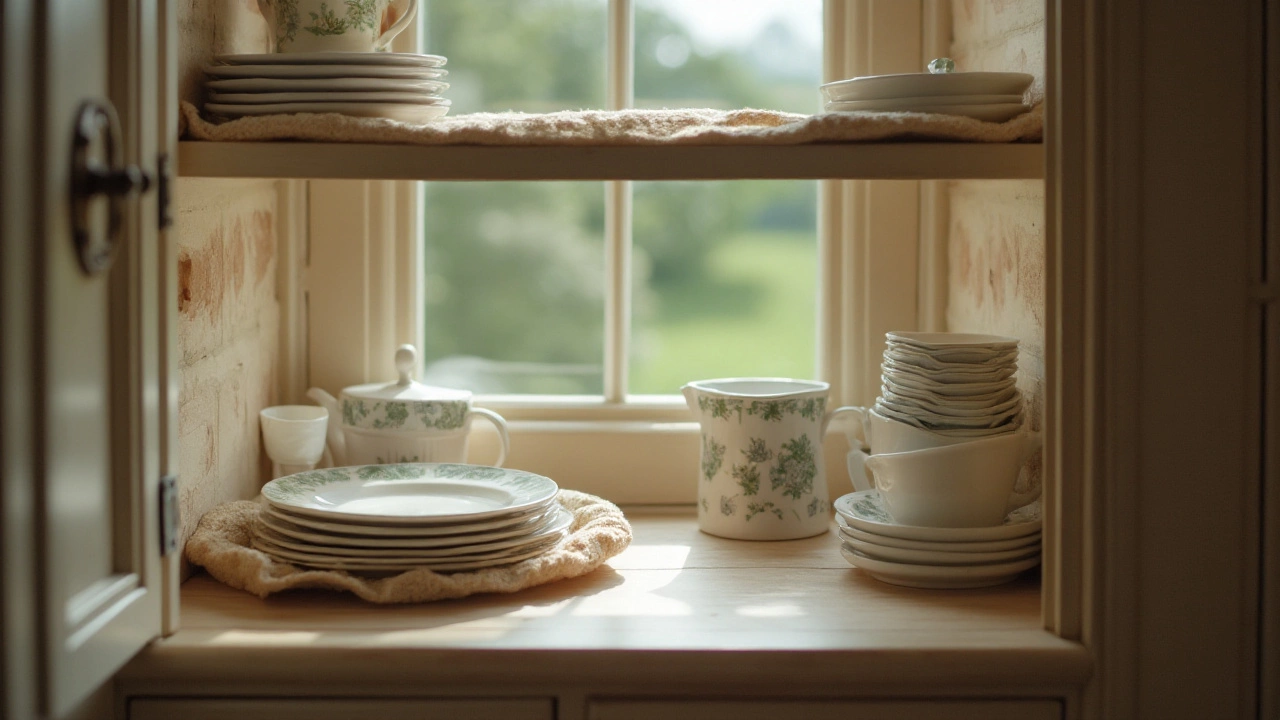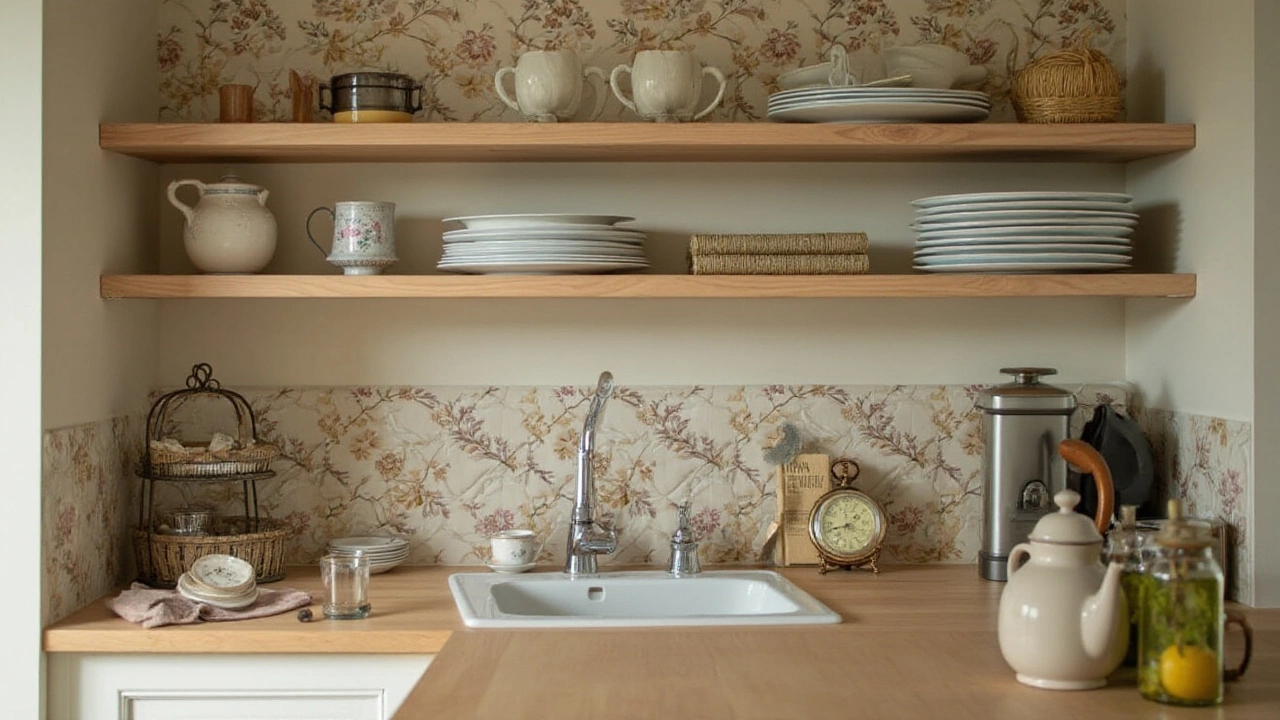Shelf lining might seem like a mundane task, but it holds a special charm in many homes. Imagine pulling open a drawer or a cupboard and being greeted by the neat harmony of a beautifully lined shelf. It’s not just a visual treat; it’s functional too! In the days of our grandparents, lining shelves was a practical necessity, a means to protect cherished china from the ravages of time and dust.
Today, shelf lining can be a delightful blend of function and personal flair. With a plethora of materials and styles to choose from, lining your shelves offers a chance to express creativity while maintaining organization. But why do people line shelves? Is it just tradition, or does it serve a modern purpose? And how can one get the most out of this age-old practice in today’s home?
- The History and Purpose of Shelf Lining
- Modern Reasons to Line Shelves
- Creative Ideas for Shelf Lining
- Practical Tips for Effective Shelf Lining
The History and Purpose of Shelf Lining
Shelf lining, emerging from a time when practicality and simple beauty were closely intertwined, has long held an essential place in household upkeep. Historically, it served as a way to preserve the delicate surfaces of shelves, especially those made from wood, which were prone to scratches, stains, and moisture damage. In the early days, people chose materials that were readily available, such as newspapers or fabric scraps, to line their shelves, often using a method passed down through generations.
These protective layers weren't only about function; they were also an opportunity to bring a touch of personality into the home. Families adopted vibrant colors and patterns to reflect their tastes, often coordinating with the decor of their kitchens or pantries. This practice evolved into a subtle form of self-expression, where each lining told a modest tale of the homeowner's lifestyle and preferences. According to a survey conducted by a popular home magazine, nearly 80% of people remembered their grandparents using lined shelves in their homes, underscoring the cultural continuity of this practice.
To understand why people continue to line shelves today, it's important to consider the materials now in use. Modern shelf liners are crafted from an array of substances, including vinyl, rubber, and thick paper, each chosen for its specific protective qualities. Vinyl, for instance, is celebrated for its durability and ease of cleaning, while rubber offers a non-slip surface, ensuring items remain in place. As one interior design expert notes, “The right shelf liner can transform a cabinet from utilitarian to delightful, enhancing its lifespan and usability.” The use of these materials marks a blend of old traditions with new technology, the evolution of an essential household craft.
Some might wonder about the necessity of this tradition in today’s fast-paced world. The benefits, however, extend beyond mere aesthetics and protection; they promote better organization and ease of access. With carefully lined shelves, items are cushioned from hard landings and potential spills are less daunting as liners can be easily wiped clean or replaced. This orchestration of order is soothing in a way that goes beyond the visual, emanating a sense of calm and efficiency that is appreciated in any home environment.
The art of shelf lining is not limited to kitchen cupboards and pantries. Its versatile appeal extends to closet shelves, bathroom storage, and even craft rooms. Wherever there is a need to bring order to chaos, there's room for a perfectly placed liner. Remarkably, a study published in a home organization journal found that households using lined shelving systems experienced a 15% reduction in time spent searching for items, an encouraging statistic for anyone seeking harmony in their home.
As the years pass and home design trends shift, shelf lining remains a quiet constant, its popularity undiminished thanks to its blend of protective function and decorative potential. One could argue that in a fast-paced, ever-changing world, shelf lining represents a touch of stability, a nod to simpler times when taking care of household details was an act of loving maintenance. Whether it's a vintage floral print or a sleek modern design, the humble shelf liner signals a timeless dedication to both form and function.

Modern Reasons to Line Shelves
Today, shelf lining goes beyond mere tradition; it encompasses a range of practical and aesthetic benefits suitable for modern lifestyles. One of the primary motivations is preservation. Many modern cabinets and shelves are made of materials that may not stand the test of time without proper care. Shelf lining helps protect these surfaces from scratches, spills, and other common domestic hazards, ensuring their longevity. When you place utensils or supplies on a lined shelf, the layer acts as a buffer, reducing the risk of direct damage to your furniture. This protective aspect is particularly important in rental homes, where maintaining the existing condition of the property can spare you a headache during move-out inspections.
Beyond protection, shelf lining also adds an element of personalization to a space. With a dizzying array of patterns, colors, and textures available, homeowners can craftfully align their interiors to reflect their personality. A well-lined shelf can pull together the visual theme of a room, tying in various design elements that might otherwise feel disjointed. Some people even use shelving ideas as a conversation starter, picking bold designs that capture attention and stir curiosity. According to interior decorator Emily Harmon, "A lined shelf is like a canvas for creativity; it allows an ordinary item of furniture to tell a part of your story."
Practicality is another significant factor. In a world that values efficiency, shelf lining simplifies cleaning tasks. When a lined shelf gets dusty or sticky from spillage, all that’s needed is to wipe the liner clean or replace it. This not only saves time but also ensures hygienic conditions, particularly in areas like kitchens and bathrooms where sanitation is paramount. Moreover, DIY tips suggest using non-adhesive liners that are easy to switch out, allowing for flexibility and frequent updates to your decor without the hassle of residue left behind from adhesive alternatives.
Statistical evidence supports the benefits of shelf lining in maintaining organized homes. A study conducted by the Home Organization Institute found that households that employed shelf lining solutions reported a 30% increase in their perception of order and tidiness. This sense of order is not just a visual benefit, but also boosts mental well-being by reducing clutter-induced stress. The lining helps in creating fixed spots for your items, making things easier to locate and reducing the chaos of misplaced belongings. People who enjoy crafting also use DIY tips to turn shelf lining into seasonal projects, changing patterns with the change of seasons to add variety to their home environment.

Creative Ideas for Shelf Lining
Most people wouldn't believe how much a simple liner can transform their shelves, but the possibilities are as endless as your creativity allows. Let’s dive into some creative ideas that could change how you look at shelf lining forever. Whether it's using vibrant, patterned adhesives or sophisticated, subtle designs, the secret lies in balancing aesthetics with practicality. Start by considering what’s most important to you: protecting the shelves, enhancing visuals, or perhaps even infusing a dash of personality into a particular room. Each choice drives a different direction and requires different sets of materials, ensuring a perfect tailor-made fit for your needs.
One playful twist on traditional shelf lining is using wallpaper leftovers. It's a great way to enhance the home organization aspect of your space by creating a thematic continuity. Wallpapers offer a range of colors and patterns that standard liners may lack, turning your storage into a visual delight. Although wallpapers can be pricier than basic liners, they're effective for small projects and give a high-end look without breaking the bank. Just make sure to choose a durable wallpaper resistant to moisture and staining commonly found in kitchens or bathrooms.
If a subtle appearance is more your thing, consider another innovative choice: fabric linings. Fabrics provide a soft touch and can bring a homely, cozy atmosphere to your cabinets and bookshelves. Opt for something breathable to maintain good air circulation, preventing mildew in moisture-prone areas. Attaching these with spray adhesive offers a secure fix, but they could also be stapled or tacked for a lovely rustic finish. Imagine opening a cabinet or pantry and being surprised by the unexpected softness and color awaiting behind closed doors.
Some fans of DIY might find themselves drawn to the idea of upcycling old materials like brown parcel paper or maps as shelf liners. Not only does this promote sustainability, but it also helps combat waste by using items you might already have at home. These liners can add an authentic vintage feel to a room, perfect for those who appreciate eccentric and resourceful decorating methods. Layering with clear plexiglass can protect the maps or paper while offering a unique and nostalgic experience whenever you're viewing your belongings.
Why not add a sprinkle of elegance to your shelves with metallic or glittery liners? Those who adore glowing spaces with a bit of a shine will find that metallic adhesive liners offer a chic and dazzling finish. Glitter infused paper or vinyl adds sparkle, it tends to play with light, bringing life and movement to your room. This idea is especially captivating in areas where light isn't abundant, such as hallways or closets, where the liners can reflect available light, creating a sense of space.
"Decorating is about making spaces feel fabulous and personal," notes interior designer Emily Henderson. "Shelf liners might seem small but used thoughtfully, they can make a huge impact."
If none of these suggestions ignites a spark, creating your own personalized liners could be the perfect project. Purchase plain liners and customize them through stenciling or painting. By doing so, you can craft a one-of-a-kind look that enhances your shelving ideas. This approach encourages individual expression, a crucial element for cultivating an inviting and warm home environment.

Practical Tips for Effective Shelf Lining
When it comes to shelf lining, practice can make perfect. It’s more than just rolling out material and hoping for the best. Successful shelf lining involves choosing the right material, measuring accurately, and applying it with precision to ensure durability and aesthetic appeal. The first trick is to select the appropriate material. Options range from foam liners, which are brilliant for their cushioning properties, to adhesive varieties that cling effortlessly to the surfaces and make the lining process a breeze. Each has its own advantages, and the choice depends largely on the items you'll place on the shelves. Adhesive liners, for instance, are excellent for securing delicate china in place, reducing slips, whereas non-adhesive ones offer easy removal and cleaning convenience.
Before even unrolling a liner, seize your measuring tape. Precision in measuring is crucial; otherwise, you risk wastage or a misfit, which can look just as untidy as not lining at all. Measure the length, width, and depth of the shelf multiple times to ensure complete coverage, leaving a slight margin to tuck in for a flawless finish. The choice of tools is another pointer worth noting. A sharp pair of scissors works wonders in achieving clean cuts, though using a utility knife can provide even crisper edges, which sit flush against the shelf's sides. When cutting the liner, always work on a large flat surface to maintain control and accuracy.
Having gathered your materials and cut them to size, it’s time to think about application, which depends largely on the liner type. For adhesive liners, start from one end of the shelf, peel a small section of the backing, and gradually smooth it down. This method prevents air bubbles and creasing, which not only look unsightly but can shorten the lifespan of your liner. For non-adhesive liners, placement is simpler but requires occasional smoothing to keep them flat and neat. If you are a fan of extra stability, consider using removable double-sided tape at the corners or edges.
The process doesn't end with application. Every so often, check the liners for wear and tear. Regular maintenance can involve removing the liners for washing if they're constructed from washable material, or simply wiping them down with a damp cloth. This ensures longevity and keeps your home organization on point. An invaluable tip from the pros is to label the underside of the liners, noting their respective shelf location. It comes in handy during cleaning or redecoration, ensuring that you can place them back without the guessing game.
I read a while ago in a home decor magazine that, "A well-lined shelf is akin to laying down a red carpet for your belongings." Often, that extra layer of effort signifies welcome, showcasing items with warmth and order making guests (or even yourself!) feel more at home.
For those DIY enthusiasts looking to spruce up their shelving ideas, a dash of creativity should not be overlooked. Mixing patterns or themes according to the room's decor can make an artistic statement. For instance, delicate floral liners lend charm to kitchen cabinets, while bold geometrical designs can add a contemporary flair to your living room storage. Patterns aren’t just a treat for the eyes; they also draw attention to the care taken in organizing each shelf.
In essence, whether it's for practical utility, aesthetic enhancement, or both, shelf lining is a cornerstone of effective home organization. It’s an art form of its own, rewarding those who give thought to the finer details. By following these practical tips, you can indeed transform any shelving space into a satisfying blend of beauty and function.

